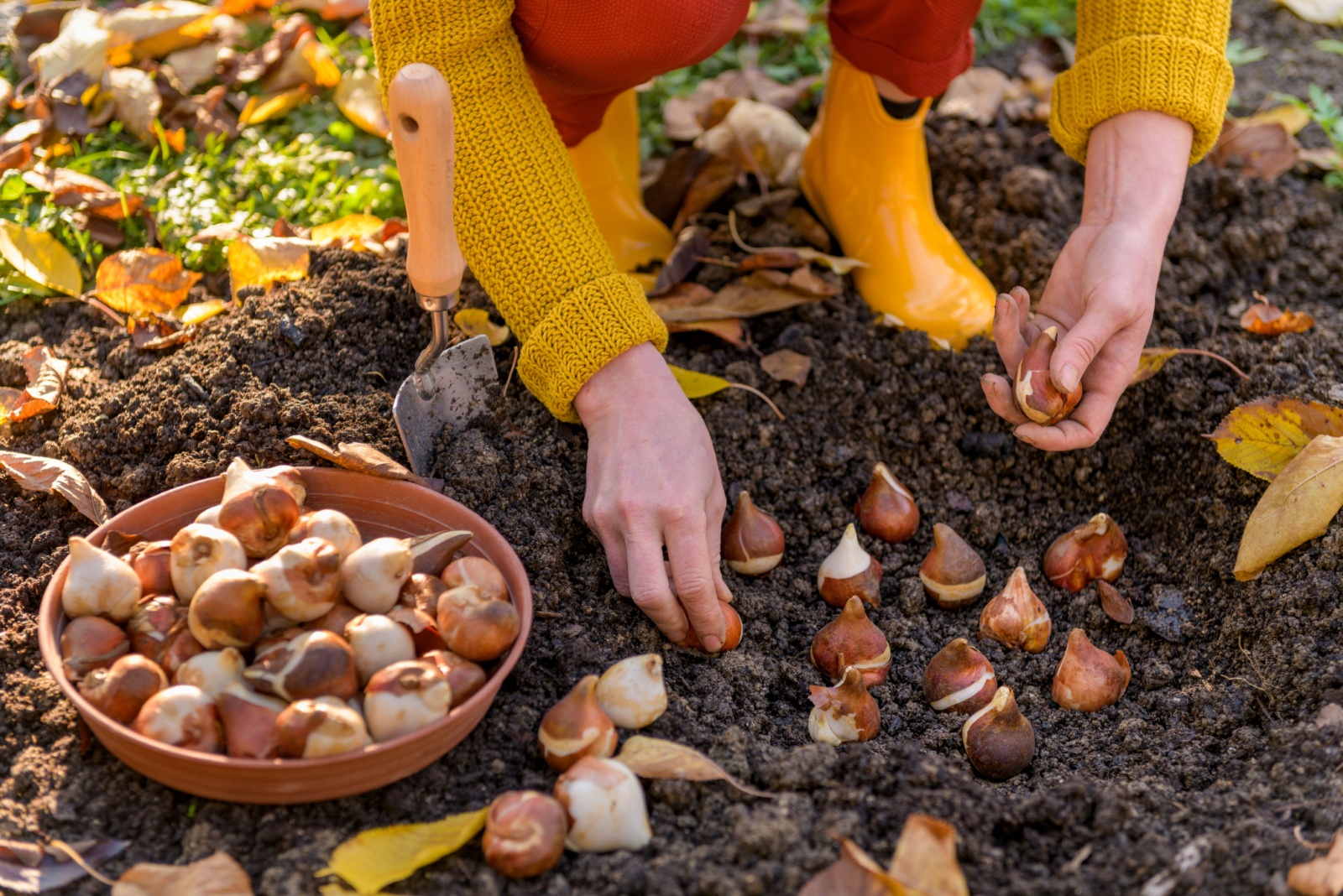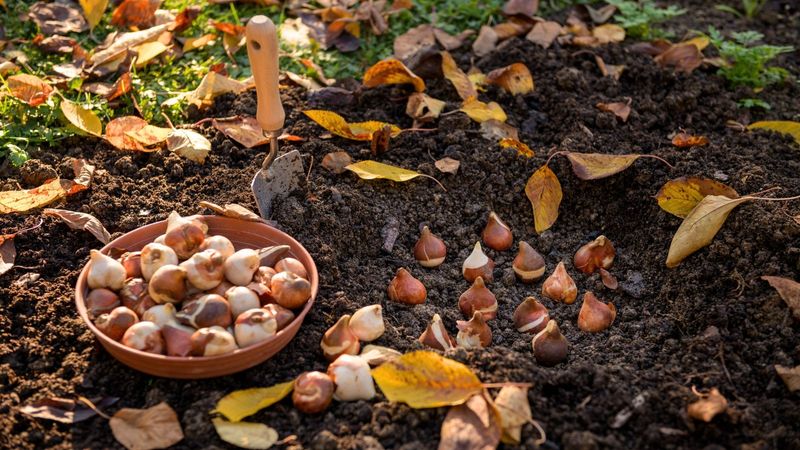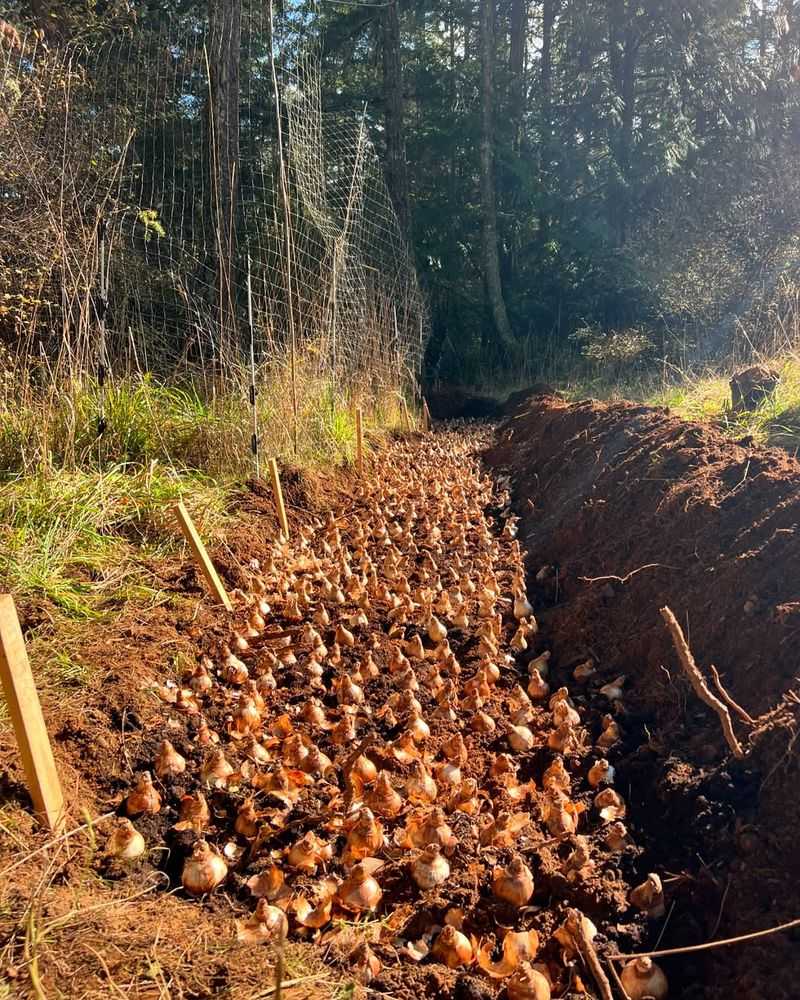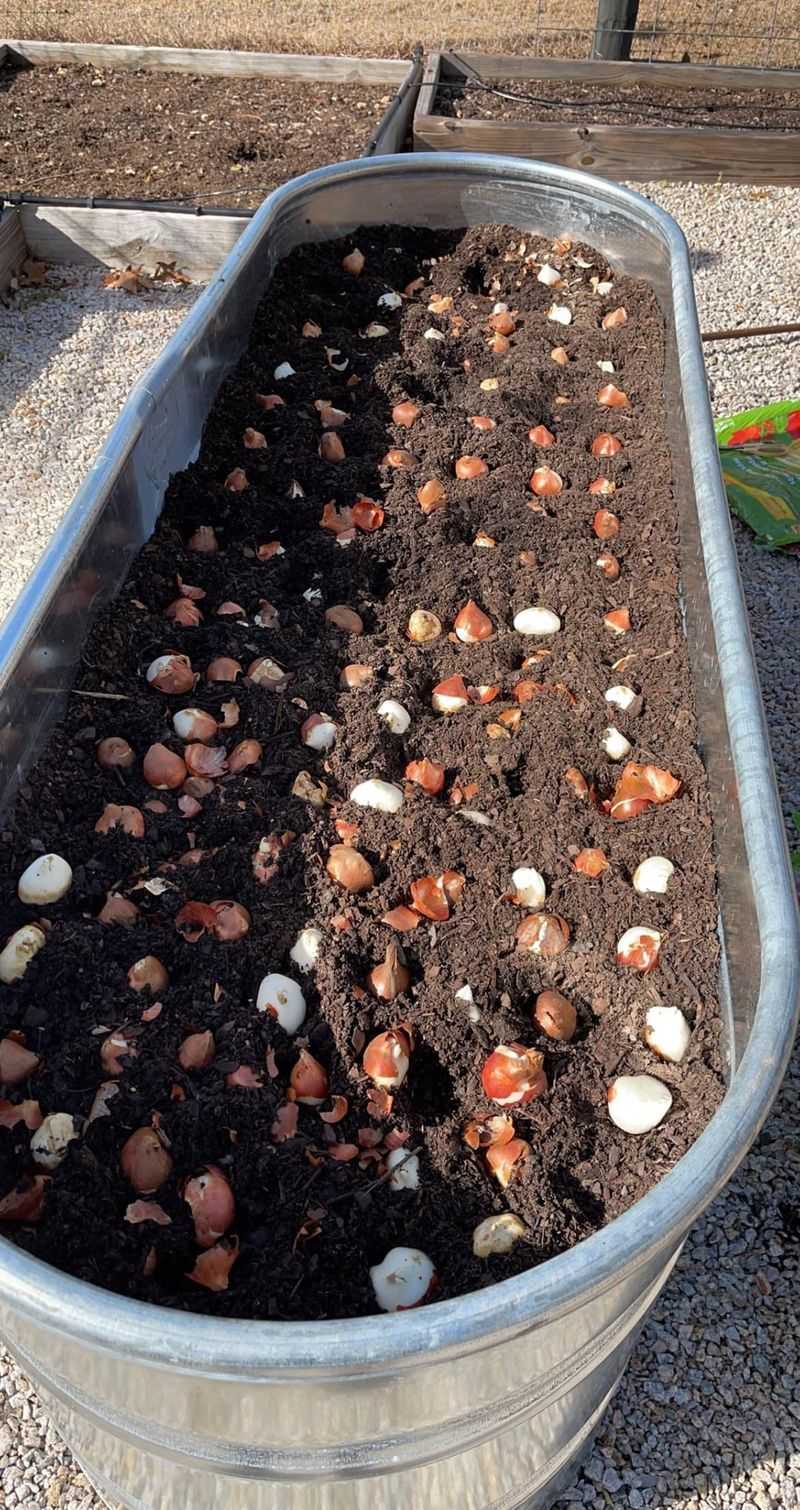October nights in Minnesota bring a special opportunity for gardeners who know the secret. While most people think daytime is best for planting, smart gardeners are grabbing their flashlights and heading outside after sunset.
Planting bulbs at night during this fall month offers surprising benefits that can make your spring garden absolutely stunning.
1. Cooler Temperatures Mean Comfortable Work
October days in Minnesota can still feel surprisingly warm, especially when you’re digging and bending over. Once the sun goes down, temperatures drop to a much more comfortable range for physical work.
You won’t end up sweaty and exhausted from planting dozens of tulip and daffodil bulbs. The cool evening air keeps you energized and focused on getting the job done right without overheating or needing constant water breaks.
2. Soil Stays Warmer After Sunset
Something magical happens to Minnesota soil during October evenings. While the air cools down quickly, the ground holds onto heat from the sunny afternoon for several hours.
Warm soil is actually ideal for bulb planting because it encourages early root development before winter freezes everything solid. Your bulbs get a head start on establishing themselves, which means stronger plants and bigger blooms come springtime. Cold air plus warm soil creates perfect planting conditions.
3. Fewer Pests Bother You Outdoors
Anyone who gardens in Minnesota knows that bugs can be relentless during daylight hours, even in October. Mosquitoes, gnats, and other annoying insects are far less active once darkness falls.
Working at night means you can focus entirely on your planting without constantly swatting away pests or applying bug spray. The peaceful quiet of evening makes the whole experience more enjoyable and lets you concentrate on spacing your bulbs correctly for maximum visual impact next spring.
4. Your Schedule Finally Allows It
Between work, school activities, and family commitments, finding daytime hours for gardening feels nearly impossible during busy fall weeks. Nighttime opens up possibilities that simply don’t exist during crowded afternoon schedules.
After dinner, when homework is done and everyone’s settled in, you can slip outside for an hour of satisfying garden work. Using a headlamp or outdoor lights, you’ll finish your bulb planting without sacrificing precious daytime hours or rushing through the job poorly.
5. Animals Are Less Likely To Dig
Squirrels and chipmunks love freshly planted bulbs, and they’re most active during daylight hours when they can easily spot your gardening activity. Planting at night keeps your work hidden from these clever creatures.
By morning, the soil has settled and your scent has faded, making it harder for animals to locate exactly where you planted those tasty tulip bulbs. You’ll lose fewer bulbs to hungry critters and see more flowers blooming when spring arrives in Minnesota.
6. Moisture Levels Are Perfect Then
October evenings in Minnesota bring dew and higher humidity levels that benefit newly planted bulbs tremendously. Morning dew will settle on your freshly worked soil, providing gentle moisture without you lifting a watering can.
Daytime planting means the sun immediately starts drying out disturbed soil, but nighttime planting gives bulbs hours of moist conditions to adjust to their new home. Natural overnight moisture helps bulbs settle in beautifully before you even wake up the next morning.
7. Neighbors Won’t Interrupt Your Flow
Daytime gardening often means friendly neighbors stopping by to chat, which is nice but can turn a one-hour job into a three-hour social event. Working after dark gives you peaceful solitude to complete your planting efficiently.
You can work at your own pace, think through your garden design carefully, and enjoy the meditative quality of repetitive planting tasks. When you’re finished, you’ll have accomplished something meaningful without constant interruptions or feeling rushed by conversations and distractions from well-meaning friends.








